In 2013–14, our joint aviation and maritime rescue coordination centre coordinated 7124 SAR incidents, which included the rescue of 4619 people. These were land and maritime–based incidents. A representative sample of these incidents is below.
Maritime incidents
Rescue of solo sailor—Poisson d’Avril, Torres Strait
8 July 2013
A 70 year old French solo sailor was winched to safety from his 2.7 metre micro yacht Poisson d’Avril in the Torres Strait after activating his SPOT tracking device in the emergency mode. We coordinated the rescue after the French Maritime Rescue Coordination Centre advised that the sailor had activated the device 170 kilometres north-east of Horn Island, Torres Strait in the early hours of 8 July.
Our Cairns–based Dornier SAR aircraft, the Horn Island rescue helicopter and the Yorke Island Police Vessel responded to the incident. The sailor was winched on board the rescue helicopter and transported to Thursday Island Hospital later that day.
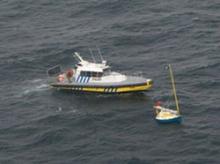
Missing vessel—Recreational cabin cruiser, Kangaroo Island, South Australia
27 July 2013
We coordinated the successful air search for two people on board a 5.7 metre fibreglass cabin cruiser after it failed to return from a fishing trip off Edithburgh in the Gulf of St Vincent, South Australia on 27 July.
The rescue coordination centre coordinated eight fixed–wing aircraft, one helicopter and two volunteer marine vessels in an 1100 square nautical mile search area. The search area was determined by drift modelling and a self–locating datum marker buoy dropped by our Melbourne based Dornier SAR aircraft.
The vessel was located the following morning in shallow water off Kangaroo Island. Both men were located safe on the shore nearby and were airlifted by helicopter to Kingscote, Kangaroo Island.
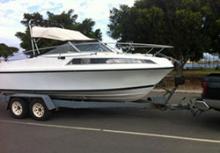
Sinking yacht—Inishkea, Tasman Sea
29 September 2013
We coordinated the successful rescue of two sailors at night under difficult weather conditions after they were forced to abandon their sinking yacht.
Sydney Water Police notified us that the 13.7 metre yacht Inishkea with two people on board was sinking 380 nautical miles east of Eden, New South Wales and was without a life raft or distress beacon.
MV E.R. Wilhelmshaven, our Melbourne-based Dornier SAR aircraft and the ANZAC-class frigate HMAS Perth were tasked to respond to the distress call along with a Seahawk helicopter from Nowra base.
The Dornier located the stricken yacht and dropped a distress beacon, strobe light and communications equipment to the crew who then boarded their tender. MV E.R. Wilhelmshaven arrived on the scene after dark but was unable to rescue the crew due to rough seas. The crew were subsequently winched aboard the Seahawk helicopter during the night and amid very difficult sea conditions. The helicopter returned to Jervis Bay after refuelling assistance from HMAS Perth.
Search and rescue exercise—Radiance of the Sea
11-13 October 2013
We held a successful SAR exercise with the Caribbean cruise liner Radiance of the Seas over the weekend of 11–13 October as part of an ongoing engagement process with the Carnival Cruise Line.
The exercise included briefing the ship’s executive team and a two day familiarisation voyage involving a live SAR exercise scenario responding to an overturned catamaran.
During the exercise, our Melbourne–based Dornier SAR aircraft conducted search activities in the vicinity of the Radiance of the Seas. A light stores container was dropped (as a proxy for survivors) and the Radiance of the Seas’ rescue boat recovered the container.
Two AMSA officers, a Search and Rescue Officer (Maritime) and the Emergency Response Division Aeronautical Standards Officer (Mission Systems), joined the ship for the exercise.
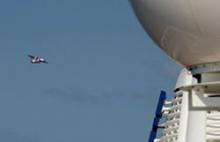
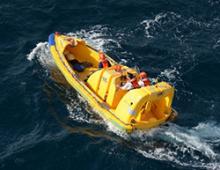
Engine room fire—MV Spirit of Fiji Islands, Philippines
12 October 2013
We coordinated the rescue of 19 crew from the 95 metre roll-on / roll-off ferry MV Spirit of Fiji Islands during typhoon weather conditions 90 nautical miles east north–east of Aparri, Philippines.
We received a distress call from the master of the vessel reporting an uncontrolled engine room fire mid-morning on 12 October. Noting the incident was within the Philippines search and rescue region, we agreed to coordinate the response after the Philippines rescue sub–centre at Aparri advised they were not in a position to support the incident.
Five merchant ships responded to the request for assistance including the Chinese container ship Xin Tian Jin which arrived on scene two hours after the initial distress call. The rescue coordination centre communicated with the container ship with the assistance of the United States coast guard joint aeronautical and maritime rescue coordination centre (Honolulu).
Four hours after the initial distress call the crew of the Spirit of Fiji Islands were rescued from the water without injury by the MV Xin Tian Jin under very difficult weather conditions and five metre seas.
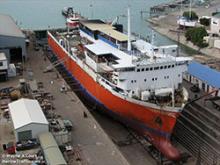
Ultra-light aircraft engine failure—Rescue from water, Bass Strait
28 October 2013
We coordinated the successful rescue of two people in Bass Strait after their Thruster ultra–light aircraft experienced engine failure 36 kilometres from Flinders Island.
The Latrobe Valley rescue helicopter winched the two survivors from the water following assistance from several aircraft and vessels including a RAAF Hudson Super Kingair, Sharp Airlines aircraft, rescue helicopters from Latrobe Valley and Hobart, our Dornier SAR aircraft, the Tasmanian Police and a recreational yacht.
The aircraft’s mayday call was followed by activation of a registered personal locator distress beacon detected by the Cospas Sarsat satellite system 18 kilometres off Waterhouse Island. The aircraft was on a flight from Tasmania to Newcastle.
On arrival at the crash location rescue aircraft reported sighting two persons in the water wearing lifejackets and lying on two inflatable air beds. The survivors were winched on board the Latrobe Valley helicopter and taken to Launceston Hospital for treatment for mild hypothermia.
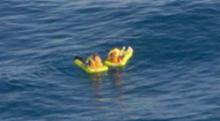
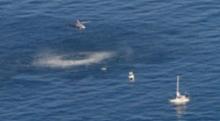
Medical evacuation—PV Radiance of the Seas, Great Australian Bight
12 November 2013
We coordinated the medical evacuation of a crew member from the passenger vessel Radiance of the Seas located 567 kilometres west of Adelaide in the Great Australian Bight.
Following consultation with our Telemedical Advice Service, the Adelaide rescue helicopter and our Melbourne-based Dornier SAR aircraft were tasked to respond to the incident. The patient was recovered by helicopter, transported to Port Lincoln and later transferred to a Royal Flying Doctor Service aircraft to Adelaide hospital.
Coincidentally, this evacuation followed a recent AMSA SAR exercise with the Radiance of the Seas over the weekend of 11–13 October 2013.

Death on board—FV New Fish 1, Western Australia
29 November 2013
We coordinated telemedical advice and the subsequent transfer of a deceased 20 year old male crew member from the fishing vessel New Fish 1 approximately 90 miles east of Nhulunbuy, Western Australia on 29 November.
The vessel reported the crew member was electrocuted whilst operating an electric grinder on deck. Telemedical advice provided to the vessel subsequently confirmed that the patient had not responded to prolonged attempts of cardiac pulmonary resuscitation. The vessel was met by Nhulunbuy Police and the deceased crewman was transferred ashore.
Vessel sinking—Greta Beach, Christmas Island
5 December, 2013
We were notified that a vessel had sunk near Greta Beach, Christmas Island on the afternoon of 5 December. All 27 people on board were believed to have made it ashore.
An Australian Customs and Border Protection Service aircraft and a number of military and police assets were tasked to respond.
A number of survivors were sighted on the beach and high surrounding cliffs. Their rescue was hindered by access to these locations. Overnight the Customs vessel Ocean Protector maintained watch over four people located on or near cliff faces at the southeast part of Christmas Island. All people were rescued by shore parties the following morning.
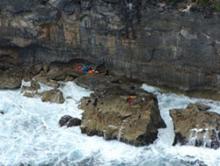
Person overboard—MS Rhapsody of the Seas, Queensland
20 December 2013
We coordinated the recovery of a person overboard from the MS Rhapsody of the Seas 600 kilometres east of Brisbane. The male passenger was seen to jump from the ship in the early hours of 20 December.
The rescue coordination centre tasked the MV Pacific Pearl, MV British Security, MV Nicolas Delmas and two fixed-wing aircraft to assist in the search. Just after 6.30 am Rhapsody reported sighting the missing person face down in the water but was unable to maintain visual contact. The Pacific Pearl and a Queensland government aircraft were tasked to assist Rhapsody in locating the missing person. Rhapsody advised at 10.00 am that the person had been recovered on board the ship deceased.
MV Akademik Shokalskiy—Commonwealth Bay, Antarctica
25 December 2013
The maritime rescue coordination centre at Falmouth, United Kingdom notified our search and rescue centre on the morning of 25 December 2013 that a Russian ice–strengthened research turned passenger ship, Akademik Shokalskiy, had issued a distress alert near Commonwealth Bay approximately 180 kilometres east of the French Dumont D’Urville base, Antarctica (2700 kilometres south of Hobart), within the Australian SAR region. The vessel had 52 passengers and 22 crew members on board.
When we contacted him, the master advised that the Akademik Shokalskiy was beset by ice and required assistance from an ice breaker to reach open water, eight kilometres away. The master expressed concern that icebergs adrift in the area also threatened the safety of the ship.
We tasked three ships of opportunity, the Chinese Antarctic Program supply ship Xuě Lóng which carried a helicopter capable of transferring passenger in case of emergency, the French research ship L’Astrolabe, and the Australian Antarctic Division ship Aurora Australis.
The Xuě Lóng attempted to reach the ship but could only close to within six nautical miles of the Akademik Shokalskiy. Xuě Lóng’s master advised he would remain in his current position to provide assistance to Akademik Shokalskiy if required. On 2 January, after discussions between the masters of the Aurora Australis, Xuě Lóng and Akademik Shokalskiy, a rescue of the 52 passengers from the Akademik Shokalskiy was conducted utilising the helicopter embarked on the Xuě Lóng to transfer passengers to the Aurora Australis.
On 8 January the Akademik Shokalskiy reported it had been able to move out of the area of the heaviest ice and the Xuě Lóng advised that it was making its way to open water. Both vessels reached open water later that day.
Vessels and personnel from the National Antarctic Programs of France, China, the United States and Australia were involved in the response. In total five ships were involved in the multi-lateral cooperative effort: Akademik Shokalskiy (Russia); L’Astrolabe (France); Xuě Lóng (China); Aurora Australis (Australia); and USCGC Polar Star (United States of America). The National Antarctic Programs of the five countries were engaged in operational responses, contingency planning, and/or the provision of specialist data.
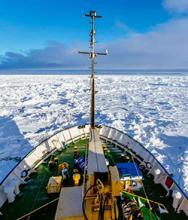
Vessel breakdown—FV Jensannette, Tasmania
3 January 2014
We coordinated the successful rescue of three crew members from the fishing vessel Jensannette shortly before the vessel was wrecked on Maatsuyker Island, Tasmania.
The rescue coordination centre responded to an unregistered 406 MHz distress beacon approximately 1.5 kilometres west of South West Cape, Tasmania, tasking our Melbourne-based Dornier SAR aircraft, a Tasmanian Police helicopter and the police vessel Van Diemen. Information received from the lighthouse keeper on Maatsuyker Island reported that the Jensannette had broken down and was drifting in 100 kilometres per hour westerly winds and six metre seas very close to South West Cape.
The Dornier made contact with Jensannette enroute to the area and the crew of three requested rescue from the vessel which was drifting rapidly towards Maatsuyker Island. The PV Van Diemen made way to the disabled vessel and performed the rescue utilising their rigid hull inflatable boat. Shortly after the rescue the Jensannette was wrecked on Maatsuyker Island.
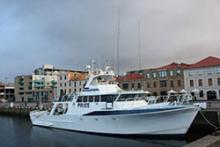
Capsized vessel—Recreational vessel, Great Keppel Island, Queensland
26 January 2014
We coordinated a successful rescue of a family of five people from a capsized recreational vessel four kilometres north of Rosslyn Bay.
The rescue coordination centre received an unlocated distress alert from an Australian registered 406 MHz beacon (without a GPS locator). Attempts to contact the beacon’s owner were unsuccessful, but emergency contacts revealed a family of two adults and three children were in the vicinity of Great Keppel Island. Yeppoon Water Police and helicopter Rescue 300 were tasked to respond.
Rescue 300 homed to the intermittent beacon signal and located the capsized vessel. The family was winched aboard and flown to Rockhampton.
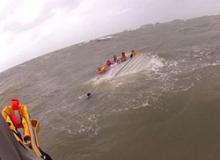
Search for Malaysia Airlines flight MH370—Indian Ocean
17 March–28 April 2014
On Saturday 8 March 2014, a Boeing 777, Malaysia Airlines flight MH370, disappeared while en route from Kuala Lumpur, Malaysia, to Beijing, China. There were 239 people on board.
After almost ten days of searching in the Malaysian region, analysis of Inmarsat satellite signals indicated the plane continued to fly for over six hours after contact was lost. The analysis indicated that the plane could have taken one of two routes–to the north or south of the equator. The southern route transited through large areas of the Australian SAR region.
On 17 March Australia assumed coordination of the search for MH370 along the possible southern corridor and over the next 15 days over 4.7 million square kilometres of ocean were searched, involving 345 aircraft flights, totalling 3177 hours. On 31 March the Australian Government’s Joint Agency Coordination Centre (JACC) took over the day–to–day communications as the search transitioned from a search and rescue operation to an investigation phase. We continued to coordinate the surface search, which involved personnel, military and civil aircraft and ships from over eight countries, until 28 April.
View the timeline of our involvement in the search for MH370.
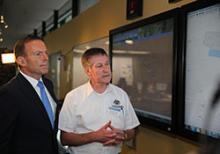
Vessel sinking—FV Tiantai Southern Ocean
29 March 2014
We received an alert from a distress beacon encoded with a Thailand mobile maritime service identity in the Antarctic region of the Southern Ocean, approximately 3150 kilometres south west of Perth on 29 March.
Enquiries revealed the vessel had been re–registered in Tanzania and had been recently operating in the vicinity of the distress beacon position. It was suspected of illegally fishing in the company of another vessel, FV Chang Bai. We were unable to obtain any information about the vessel, owner or emergency contact from authorities in Tanzania.
A long–range jet aircraft was chartered and tasked to the beacon position to investigate. In addition, a drop–capable Royal Australian Air Force AP3C Orion long-range maritime patrol aircraft was released by the Royal Australian Air Force to assist.
The jet aircraft arrived at the beacon position and confirmed that the beacon was still active, however was unable to make any sightings of survivors. It sighted debris in the water at the beacon position but could not visually locate the vessel or identify it by radar. FV Chang Bai was later located approximately 180 kilometres from the distress position but failed to respond to VHF radio calls.
As part of the response, we attempted to engage surface assets from the Australian Defence Force, Australian Antarctic Division and its international associates, South African and New Zealand Search and Rescue authorities, and by broadcast from merchant shipping. No suitable assets were identified within 1800 kilometres of the distress position.
The fishing vessel is believed to have foundered with its crew having either abandoned to FV Chang Bai or lost at sea. Expert medical advice indicated that the time frame for survival for any crew in the water or a life raft would have expired prior to arrival of any rescue ships. Search operations were suspended based on this information.

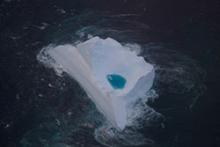
Rescue of passengers—Overdue Papua New Guinean banana boat, Nissan Island
27 April 2014
We assisted Papua New Guinea (PNG) in the successful rescue of 15 people missing on board a banana boat between Nissan Island and Buka Island, Papua New Guinea.
The banana boat was overdue at its destination and PNG’s Maritime Rescue Coordination Centre, Port Moresby, requested that we issue a broadcast to shipping and provide assistance in determining the search area. The rescue coordination centre tasked a Royal Australian Air Force AP3C Orion long–range maritime patrol aircraft which located the missing vessel 120 kilometres to the north west of Nissan Island on 1 May.
The MV Corebest OL was tasked to conduct a rescue, however before arriving on scene a vessel tasked by the PNG Provincial Disaster Organisation rescued the 15 survivors and returned them safely to shore.
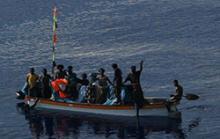
Medical evacuation—Recreational yacht Crazy Jack, East Timor
13 May 2014
We successfully coordinated the medical evacuation of two crew members of yacht Crazy Jack, 40 kilometres east of East Timor responding to their 406 MHz distress beacon alert. The yacht’s crew had been injured when the mast and rigging failed. At the request of the rescue coordination centre the MV Posh Shearwater altered course to assist the yacht and its injured crew.
On arrival at the scene, the MV Posh Shearwater transferred the crew on board using a crane and cargo net and with the assistance of Careflight Queensland (our contracted telemedical advice service), stabilised the condition of the crew. The yacht was set adrift and the ship made its way to rendezvous with the HMAS Wollongong, an Australian Navy patrol boat. The injured crew members were transferred aboard HMAS Wollongong and taken to Darwin for hospital treatment.
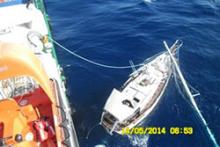
Capsized vessel—Mundi Navigator, Papua New Guinea
20 June 2014
Eleven people were rescued from the upturned barge Mundi Navigator, 83 nautical miles north-west of Port Moresby after we received an Inmarsat C distress alert. The vessel’s 406MHz distress beacon was also activated.
The rig tender vessel Go Rigel, our Cairns–based Dornier SAR aircraft, and a RPT passenger aircraft en route to Port Moresby responded to the incident. The RPT passenger aircraft located the upturned barge Mundi Navigator, two life rafts and a number of people in the water in the vicinity of the vessel.
The Dornier conducted two successful life raft drops and directed Go Rigel to the location. The Go Rigel rescued all 11 survivors who had sustained minor injuries.
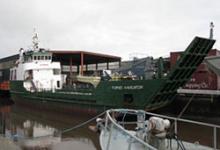
Land—based incidents
Light aircraft search–KR2 light aircraft VH-CTE, New South Wales
7 October 2013
We coordinated the search for a missing KR2 light aircraft on a flight from Adelong to Holbrook, New South Wales with one person on board. The aircraft was more than 24 hours overdue. One of our Dornier SAR aircraft, a rescue helicopter and the New South Wales Police were tasked to undertake the search overnight.
A search area was established in close proximity to the departure airstrip by triangulating the pilot’s mobile telephone. The aircraft was located on the ground after first light the following day within 500 metres of the departure airstrip with the pilot found deceased.
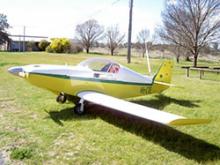
Mechanical breakdowns—Simpson Desert
8–10 October 2013
We responded to two separate requests for assistance involving the rescue of three motorcyclists in a group of six during their journey through the Simpson Desert.
Following activation of a SPOT tracking and alerting device, we worked with the Northern Territory Police to locate and assist the motorcyclists over two days after they suffered mechanical difficulties and reported they had insufficient fuel, food and water to continue their trip. The remote location of the incident was equidistant from Cairns, Darwin and Melbourne.
We tasked a rescue helicopter from Mt Isa to recover two of the men and bring them to Birdsville. Whilst this type of incident primarily falls within the Police jurisdiction, the rescue coordination centre provided assistance because of the remote locality, reports from the motor cyclists of dehydration, fatigue and minimal battery life remaining on their satellite phone.
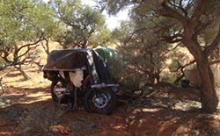
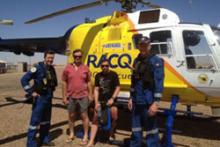
4WD motor vehicle accident—Northern Territory
26 November 2013
We coordinated the rescue of two people involved in a four-wheel drive motor vehicle accident 150 kilometres north east of Uluru after responding to the activation of a 406 MHz distress beacon. The vehicle had been hired by two French nationals travelling between Alice Springs and Adelaide.
A helicopter was placed on standby at Ayers Rock and a road response (with medical capability) was dispatched from Mereenie. On arrival at the scene of the accident the rescue party located an overturned four-wheel drive vehicle. The two people and damaged vehicle were transferred to Mereenie for medical assessment. Medical personnel then made arrangements for the evacuation of the people to Alice Springs.
Injured motorcyclist—Personal locator beacon activation, Simpson Desert
27 April 2014
We coordinated the rescue of an injured motorcyclist attempting to cross the Simpson Desert in a party of three cyclists. The rescue coordination centre detected the activated GPS encoded personnel locator beacon 207 kilometres west south west of Birdsville, Queensland on 27 April.
Our Melbourne-based Dornier SAR aircraft dropped a satellite phone and radio to the motoring party to ascertain the nature of distress while Queensland Police and ambulance personnel departed from Birdsville in two four wheel drive vehicles to the location.
In the early hours of 28 April, the Dornier aircraft located the motorcyclists’ camp site where two persons waving flashlights were observed. Police and ambulance arrived a few hours later and advised that one rider was injured with back problems. The patient was flown to Birdsville by helicopter, and the other two group members followed the Queensland Police to Birdsville to re-supply and obtain a replacement distress beacon.